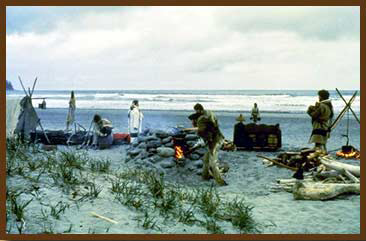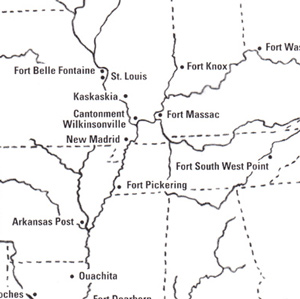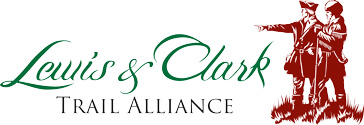Life in the U.S. Army in 1803, especially on the western frontier, provided little free-time, but the day’s alcohol ration gave some relief from the day’s fatigue duties.


Early Roman soldiers received an allowance of salt, which was called a salarium—a “salary.” A good soldier had to be “worth his salt.” What sort of salaries did the men of the Corps of Discovery earn?


The members of the expedition began their journey as a wild bunch of hard drinking, brawling, and insubordinate rowdies. By 7 April 1805, the day the Corps of Northwestern Discovery pulled out of Fort Mandan, Lewis described his men as enjoying “a most perfect harmony.”


It is a remarkable fact that Lewis’s planning for the expedition resulted in a surplus of four essential commodities: lead for bullets and powder to fire them, ink to write with and paper to write on. It was equally significant, as far as most of the men were concerned, that they ran short of tobacco and whiskey.
Army Hygiene
by Joseph A. Mussulman

Officers were to see that their men’s hands and faces were daily “washed clean” and their hair combed. Soap was relatively expensive, and if individuals or families couldn’t manage to make their own, they just went without.


No military commander of the 18th-century would have thought of leading his troops on any mission without planning for liquor. In legislation and military orders of the day, the ration was typically expressed in “gills.”
Army Life and Leadership
by Sherman L. Fleek

Retired U.S. Army lieutenant colonel and former chief historian of the National Guard Bureau discusses frontier army life in 1803 and the exemplary military leadership of the co-captains and non-commissioned officers.


A multitude duties awaited the hapless private, and idle hands and feet were never knowingly allowed in a military camp. Most fatigue duties rewarded the men with an extra gill (1/4 of a pint) of whiskey each day.
Uniforms
by Joseph A. Mussulman

Each enlisted man, as well as the Captains, brought with them their dress uniforms which was worn for formal, official occasions such as dress reviews and parades, courts-martial, and funerals.
Experience the Lewis and Clark Trail
The Lewis and Clark Trail Experience—our sister site at lewisandclark.travel—connects the world to people and places on the Lewis and Clark Trail.
Discover More
- The Lewis and Clark Expedition: Day by Day by Gary E. Moulton (University of Nebraska Press, 2018). The story in prose, 14 May 1804–23 September 1806.
- The Lewis and Clark Journals: An American Epic of Discovery (abridged) by Gary E. Moulton (University of Nebraska Press, 2003). Selected journal excerpts, 14 May 1804–23 September 1806.
- The Lewis and Clark Journals. by Gary E. Moulton (University of Nebraska Press, 1983–2001). The complete story in 13 volumes.

